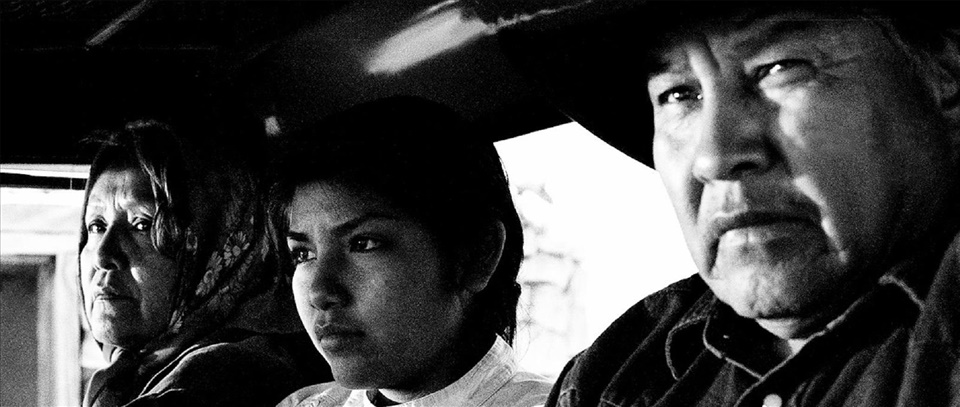
Shimásání
Author: Tina Andersson, Norgesfilm AS
About the filmmaker
Blackhorse Lowe is a writer, director and producer. His films have been screened at several film festivals all around the world, such as ImagineNATIVE, Tribeca Film Festival and Sundance Film Festival.
He grew up on a farm in the Navajo reservation. Because of allergies he had to spend a lot of time inside watching movies and drawing. This along with reading comics and books about Navajo creation stories made him fall in love with storytelling.
The story that Shimásání is built on was told to Blackhorse Lowe and his siblings by their grandmother. Her story made a great impression on them and the idea of wanting to leave home and explore the world resonated with him.
I feel very fortunate to be a filmmaker. Films are the ultimate art, they operate on many levels and work with all the elements of life.
(Blackhorse Lowe, 2020)
Films directed by Blackhorse Lowe available on Sapmifilm:
- Hooghan (2018)
- Chasing the Light (2016)
- Shimásání (2009)
Blackhorse Lowes favourite films:
- The Thin Red Line (1998)
- Dead Man (1995)
- Apocalypse Now (1979)
- Eraserhead (1977)
- The Wild Bunch (1969)
Background
The film Shimásání is set in the Navajo reservation in the 1930's. At that time most Navajos lived in remote areas where they would tend to their sheep flocks and farms. The isolation that this presented drives the main character Mary Jane's story.
According to Blackhorse Lowe, casting the film was the most challenging part of making the film. Finding the actors to play Mary Jane and Anna Mae took forever. They actually didn't cast these parts of the film until about a week out of shooting.
Shimásání premiered at the Tribeca Film Festival in 2009. It was also screened at Sundance Film Festival and several other festivals around the world.
TASKS
The tasks are suitable for students in upper secondary school.
A. School
Mary Jane, the youngest of the two sisters in the film, is not going to school. She is taking care of the family's sheeps. She wants to go to school but her grandmother does not give her permission.
- Why do you think only one of the sisters is allowed to go to school?
Even though Mary Jane's older sister is permitted to go to school, she keeps running away from school.
- Why doesn't she like it at school?
B. Mary Jane
Mary Jane is a daydreamer. After she took a look in her older sister's school book, she got a glimpse of other parts of the world that are “just over the mountain.” When the film ends Mary Jane is standing by a cross road where she has to make a choice. Will she stay with her grandmother, or travel and explore the world beyond?
Write a short story about Mary Jane's life when she is 30 years old.
- How will her life be?
- Where does she live?
- What has she experienced in life?
C. The Navajo reservation
The film is set in the Navajo reservation in the 1930's. Make a presentation about the Navajo reservation.
The presentation should contain parts about:
- Location and population
- Brief history
- Traditions and culture
- The Hogan - the traditional Navajo home.
Take a look at Hooghan (also directed by Blackhorse Lowe) for further inspiration.
D. Analyze
When you analyze a film you are trying to find out what the film is telling us. What is the story? What kind of cinematic techniques are being used?
Start with watching the film. It is a good idea to have a notebook at hand so that you can make notes while you’re watching.
Answer these questions after watching the film:
- How is the story in the film structured?
- Describe the characters in the film?
- Describe the way nature is portrayed in the film?
- What themes does the film address?
- Camera angles and movement play an important role in filmmaking. What kind of camera angles are being used at 06:42 and 09:23 in the film?
- Shimásání is shot in 35mm black-and-white film. In your opinion, how does the black-and-white effect influence the film experience?


